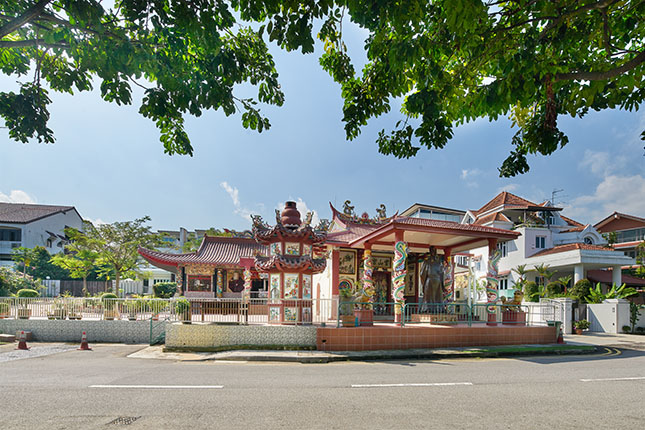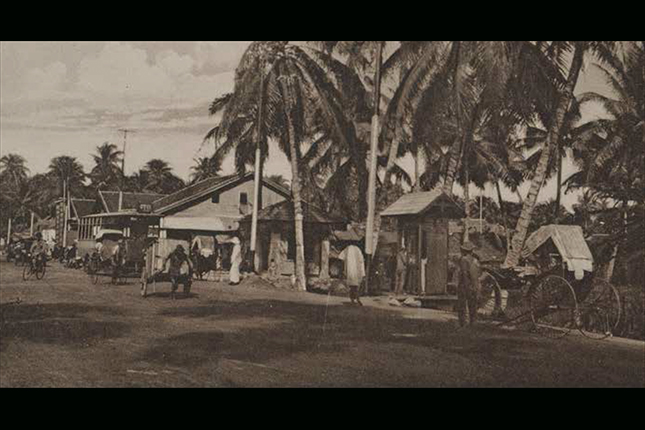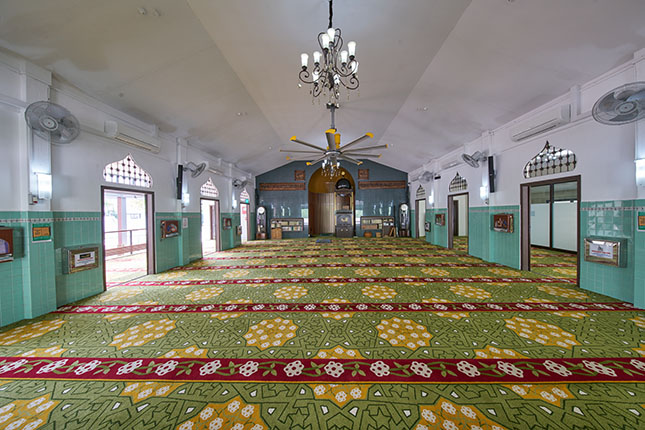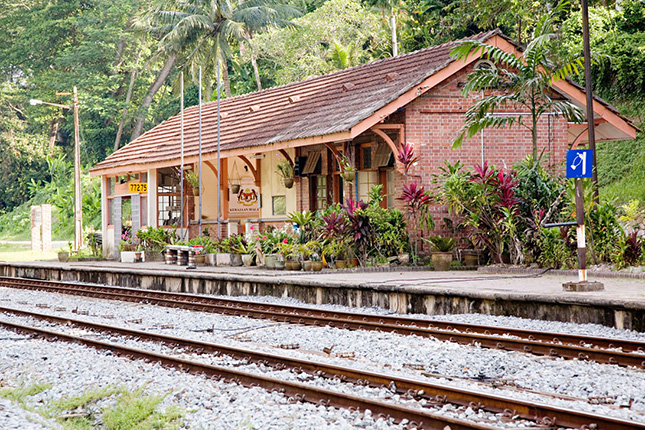Hoon San Temple (云山宫) is dedicated to the deity Lim Tai See and was established by emigres from Jiazhou village in Fujian, China in 1902. Lim Tai See, born in 1537 during the Ming Dynasty, was well-respected for his stance against corruption and commitment to social justice. Following his death in 1604, Lim was deified and a number of Hokkien communities in China, Taiwan and Southeast Asia built temples in his name.
Originally built in wood, Hoon San Temple was reconstructed in brick, masonry and wood in 1920. The temple underwent renovations between 2008 and 2011, with its intricate frescos and painted pillar carvings restored by craftsmen from China. Its other notable features include interlocking wooden beams in the Hokkien style as well as wall murals depicting the 24 stories of filial piety that were written during the Yuan Dynasty.
During the 1950s and 1960s, the temple organised regular Chinese opera shows which were performed on a theatre stage near the temple. These shows attracted villagers living in the area, including Malay residents from the neighbouring Kampong Tempe who enjoyed the performances despite language and cultural differences.
Today, Hoon San Temple and the nearby Masjid Al-Huda continue to maintain good relations and often exchange gifts of food during special occasions such as the Lunar New Year and Hari Raya Puasa. The temple was awarded conservation status by the Urban Redevelopment Authority in 2009.
















